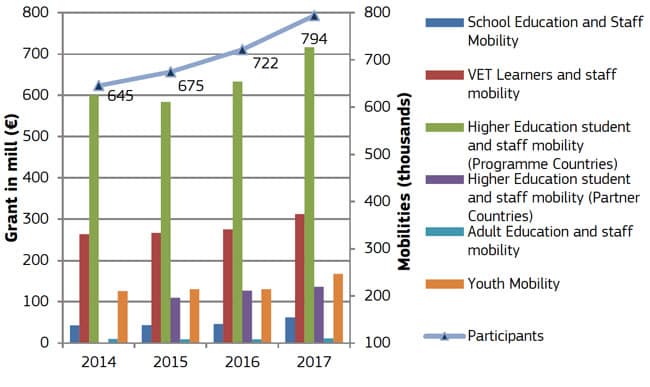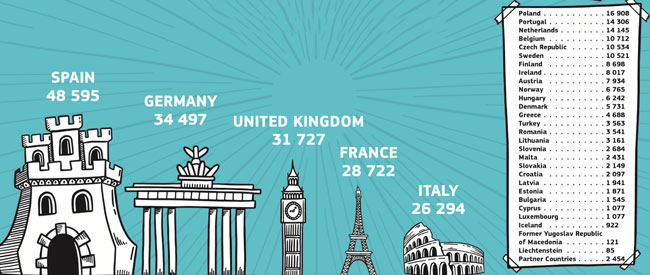Erasmus+ supported nearly 800,000 international placements in 2017
A recent statement from the European Commission highlights that the landmark Erasmus+ mobility programme provided for a record-high participation of just under 800,000 people to study, train, or volunteer abroad in 2017. This represents an increase of 10% over 2016, and reinforces the status of the programme as one of the most ambitious and farthest-reaching mobility programmes in recent history.
The total programme budget of €2.6 billion (US$2.9 billion) for 2017 provided for more than 400,000 higher education students and staff to go abroad during the year, including about 34,000 students and faculty who received grants to travel to and from Erasmus+ partner countries around the world.
In addition to higher education participants, the programme supported international placements for 160,000 vocational training students and staff and another 158,000 youth and youth workers.

Patterns of mobility
The geographic scope of the programme has expanded considerably over its 30-year history, from an original 11 countries in 1987 to 33 currently. These now include all 28 EU member states along with Turkey, the former Yugoslav Republic of Macedonia, Norway, Iceland, and Liechtenstein. The programme is now also open to partner countries around the world, which accounts in part for the increasing number of programme participants moving to (and from) those partner destinations.
Even so, France, Germany, and Spain remained the top sending countries for Erasmus+ participants in 2017. Spain is also the clear leader in terms of study destinations, with Germany, the UK, France, and Italy rounding out the top five most-popular choices for Erasmus+ exchange.

- 93% say they are “more receptive to Europe's multiculturalism” after their stay abroad
- 92% say they become “more able to adapt to and act in new situations”
- 91% say they improved their language skills during Erasmus+ exchanges or placements abroad
- 87% say that their stay abroad made them “more tolerant towards others' values and behaviours and better able to cooperate with people from different backgrounds and cultures”
For additional background, please see:













